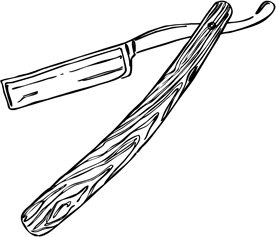I CARRIED ALICE AND FREDA’S STORY AROUND with me for years, but I didn’t find a good home for it until Nicole Cliffe and Mallory Ortberg launched The Toast and made me their history columnist. They gave me a space to write the kinds of stories I’ve always wanted to— including Alice and Freda’s heartbreaking saga.
Before the essay was published, I described it to Daniel Harmon, an editor who understood my desire to tell the girls’ story in a very specific way. I’m grateful to the entire Pulp/HMH team, including Hallie Warshaw, Jo Beaton, and Ann Edwards, and Adam Grano, who designed the gorgeous cover. Thanks to interior designer Dasha Trojanek, copyeditor Pam McElroy, and Southern publicist Rich Rennicks.
I have long admired the work of Sally Klann, the book’s illustrator, and she greatly exceeded my expectations. Sally read early drafts and listened to me describe no less than a hundred ideas, all of which she perfectly translated into stunning, nuanced visuals. Historian Mary Klann, Sally’s sister, was my first reader in grad school, and did not escape that fate on this book.
I’m generally lucky when it comes to smart friends who mistakenly offer to read early drafts. After putting in long hours with her authors, Emily Clement made herself available to me for small moments of panic and big picture edits. The wonderful Daniel Jacobson, also an editor, painstakingly reviewed every single line, and managed to do so with the same kindness he’s shown me for a decade. No one understood what I wanted to accomplish here more than Avi Steinberg, and he made crucial cuts, organizational suggestions, and line edits.
I spent a few weeks scouring archives in Tennessee, fueled by biscuits and aided by local historians, curators, and specialists. I’m particularly grateful to Wayne Dowdy at the Memphis Public Library, who provided research support long after I left the state, and the excellent archivists at the Shelby County Register/Archives, including Frank Stewart. I was lucky enough to find a random link to Audrey May of the MPL and the Memphis Gay and Lesbian Community Center early on. She put me in touch with, among others, Vincent Astor, who generously shared his research and gave me a personal tour of Elmwood Cemetery, as well as the Memphis waterfront. Dr. John Harkins was kind enough to answer my rapid-fire local history questions, and share his own collection, which included a catalog from the Higbee School.
My mother, Anne Bank, provided me with the hermetic retreat I needed to finish the first draft of this book, and Amelia Ashton’s Aunt Betty generously put me up while I was researching in Nashville.
Years of honors tutorials with Professor Francis Dutra at the University of California, Santa Barbara, made a historian out of me. The encouragement I received from the late Richard Helgerson, chair of the English Department, as well as Professors Enda Duffy and Mark Maslin, was particularly meaningful to me. A nod to the Honors College at UCSB as well, which rewarded performance with greater challenges, access, and support, and very much enabled me to become the person I am today. At Columbia, the late Lindy Hess left her mark on me. At Sarah Lawrence, thesis advisor Eileen Cheng taught me how to approach and manage large research projects. I was lucky enough to take classes from Matilde Zimmermann, who became my unofficial Don. Our car rides home were one of my favorite parts of grad school. Susan Rabbiner, the Assistant Director of exhibitions at the New York Public Library, was the best boss I’ve ever had—and by far the most stylish. Throughout my time at the NYPL, Susan consistently told me I should become a writer, and her praise and encouragement meant the world to me.
My brother, Justin Taines, is my biggest fan, and I’m grateful for his love and support. My husband, Michael Coe, has been telling me to become a writer since the age of nineteen, and was wildly supportive when I took his advice a decade later. This book took over his life, too, which he tolerated with patience and humor. I’m sorry that my grandparents, Max Scharnocha and Hal and Sue Taines, didn’t live to see my first book published, but I’m so grateful that they always believed it would happen.

